Josh at SteinAir sent me pictures of my panel. He is estimating that it will be ready to ship by the last week of April.
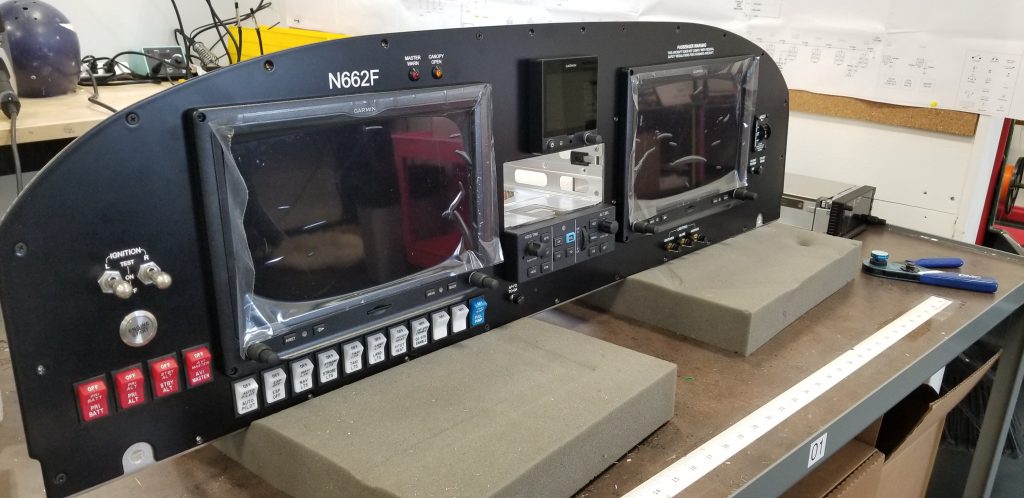
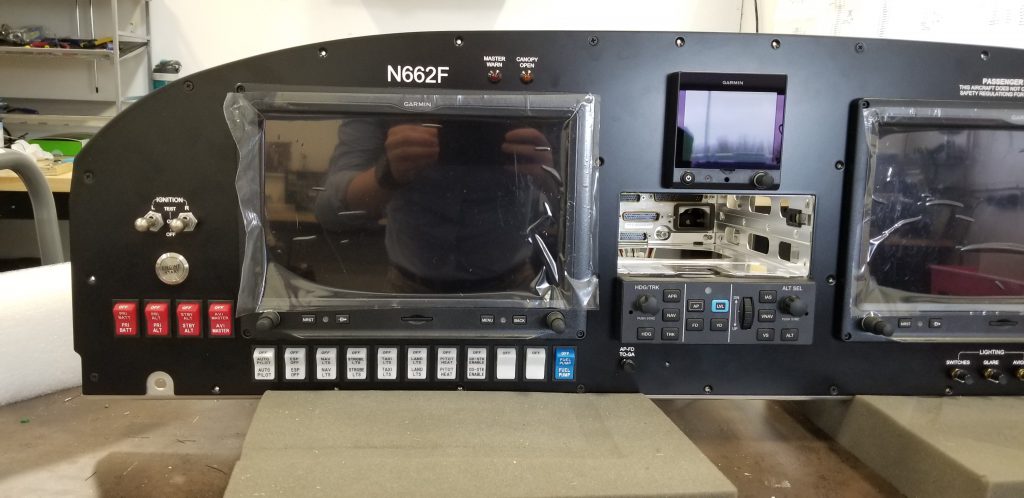
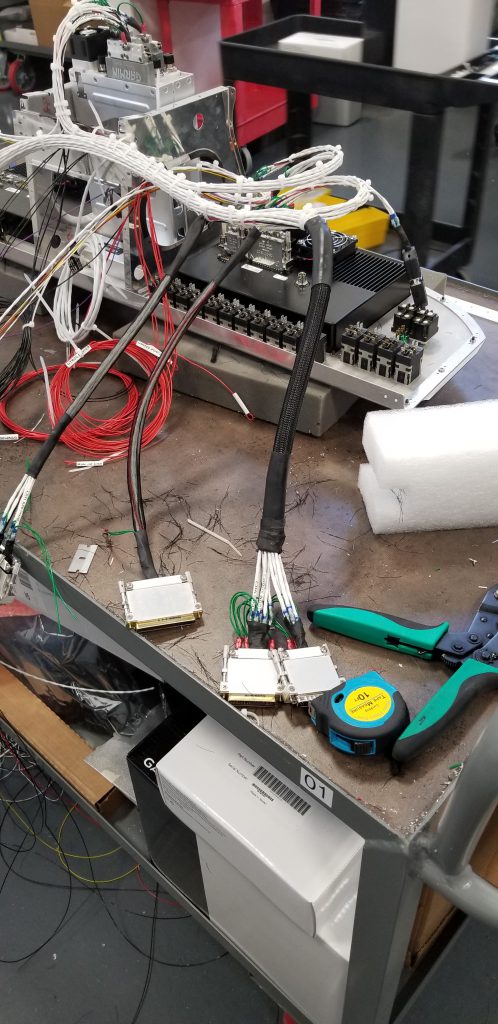
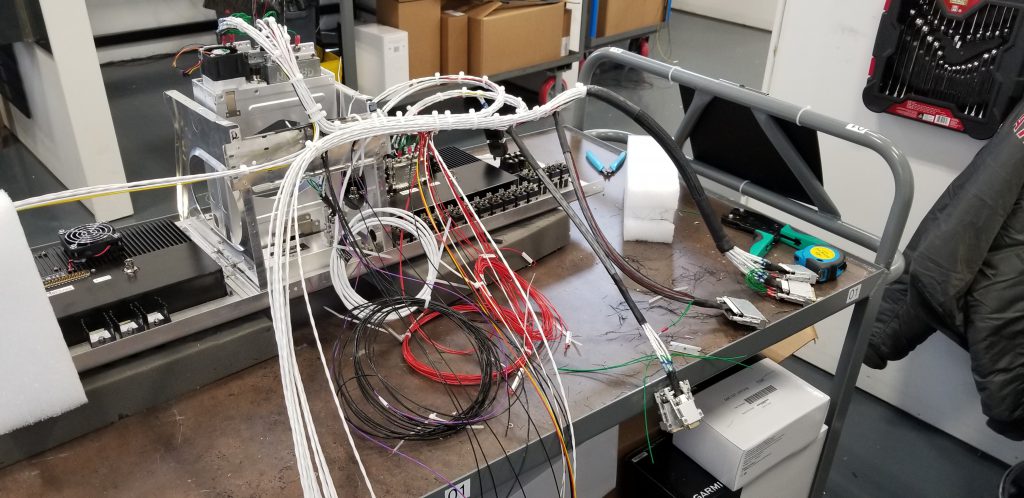
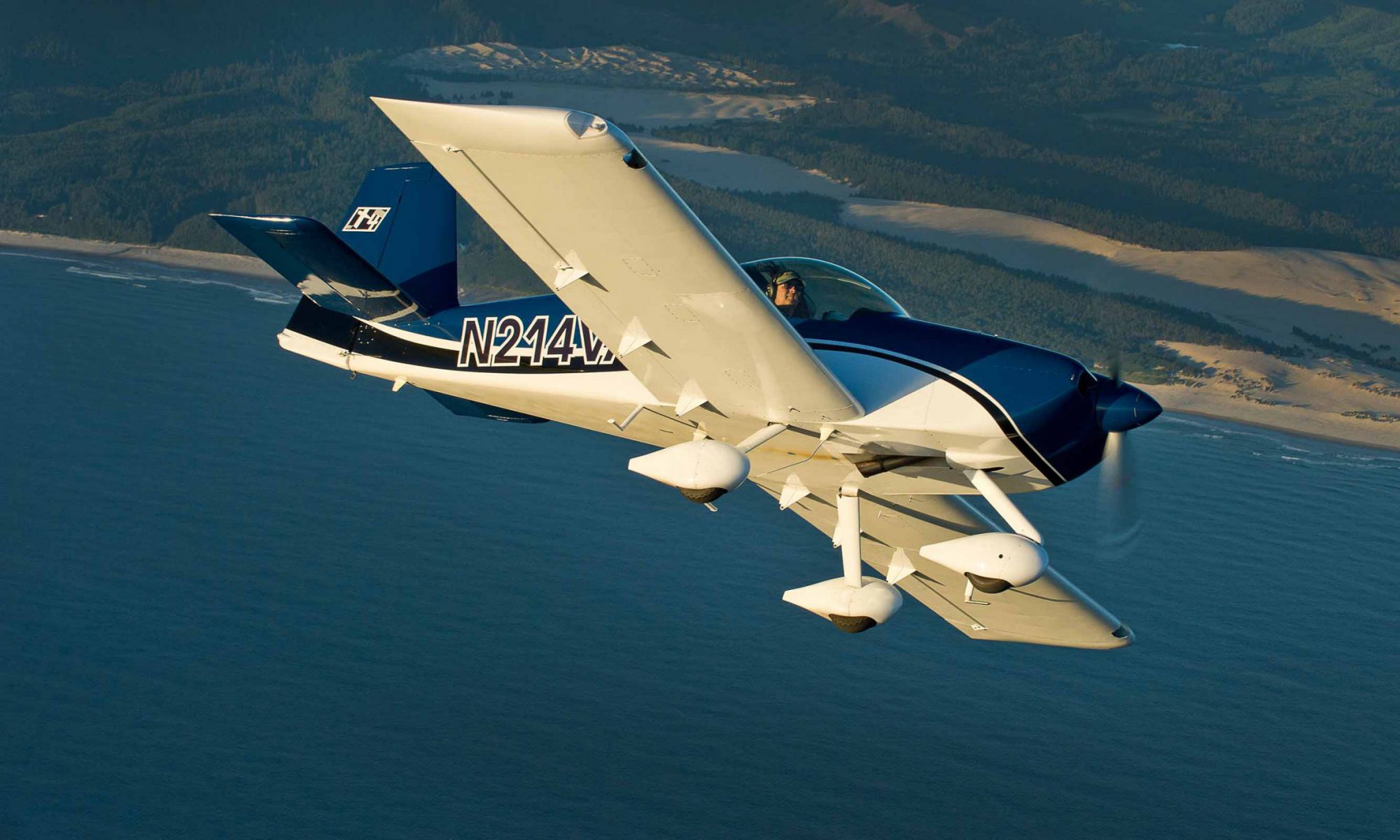
Flying since Thanksgiving day 2020
Josh at SteinAir sent me pictures of my panel. He is estimating that it will be ready to ship by the last week of April.




We worked on the flap actuator cover and the center arm rest / map box. I put some of the seat pan panels in place but only used a couple screws to secure them since i will have to remove them to paint.
We put the seat cushions in just to see what they look like (they look good!).

Meanwhile, we built most of the paint booth on the back patio. Still waiting on the fans and filters.

I also spoke to Steinair today. In normal times we would get the panel in about 3 weeks, but of course this is not a normal time (Covid-19) so I am thinking it will be 5 weeks (mid-May). I have several things i can still work on including the canopy and more fairings.
10 hours ( 2 people x 5hours)
This took me about five hours. Probably should have taken me about half that much but I took it back apart twice before I got it right. The first time was because I did a couple steps out of order and wouldn’t you know it, the first step blocked me from doing the second step. Follow the freaking directions!
The second time was because I had one of the linkages installed incorrectly which caused it to bind up. After several minutes of head scratching, I saw my mistake and fixed it. The good news is that I was getting better (faster) at putting it together each time.
We decided to replace the Van’s standard latch handle with a much better built handle from a third party source. I think it looks a lot better.
Five hours.


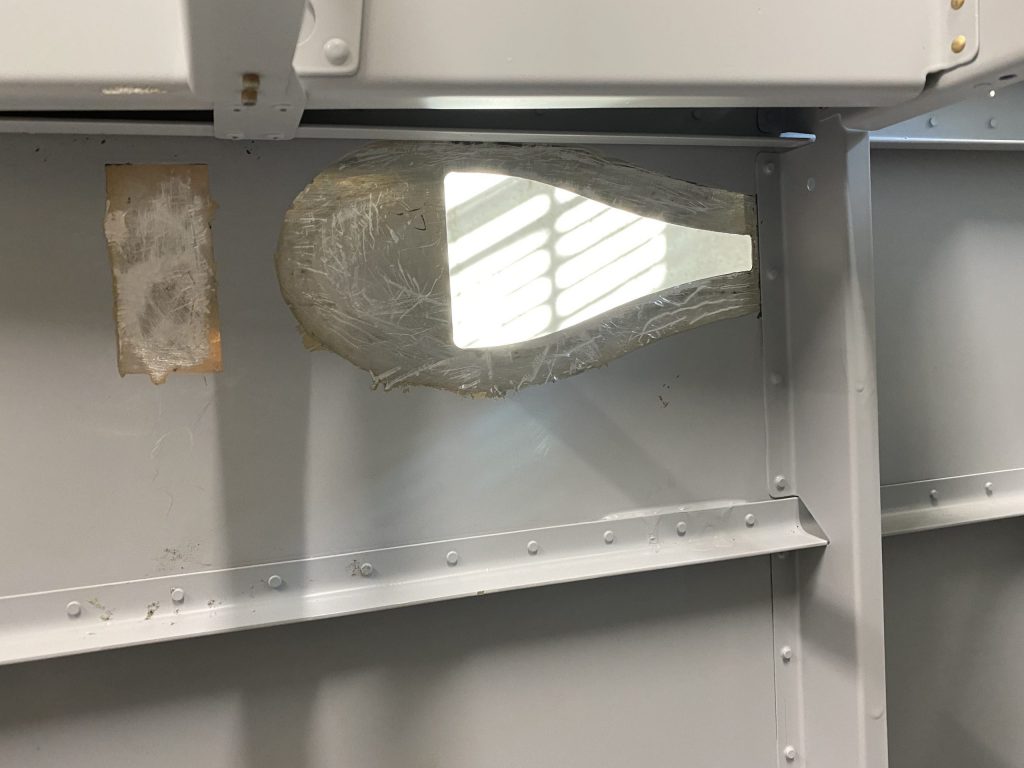
Somehow when I installed it the NACA vent on the left side moved backward about half an inch. I didn’t notice it for a day or so and by that time the ProSeal had set up completely. My first inclination was to leave it as is and “repair” it with a bit of extra fiberglass. Jon and I discussed it and decided to remove the vent.
Using a safety knife and a carpet knife I was able to cut through most of the ProSeal to remove the vent. Unfortunately, during the process I had to destroy the vent itself.
I salvaged the eyeball part ($160) but will have to re-buy the fiberglass NACA vent which isn’t too expensive. I have about another hour of effort to remove the last of the ProSeal that is still on the inside of the fuselage skin.
Hours: 2
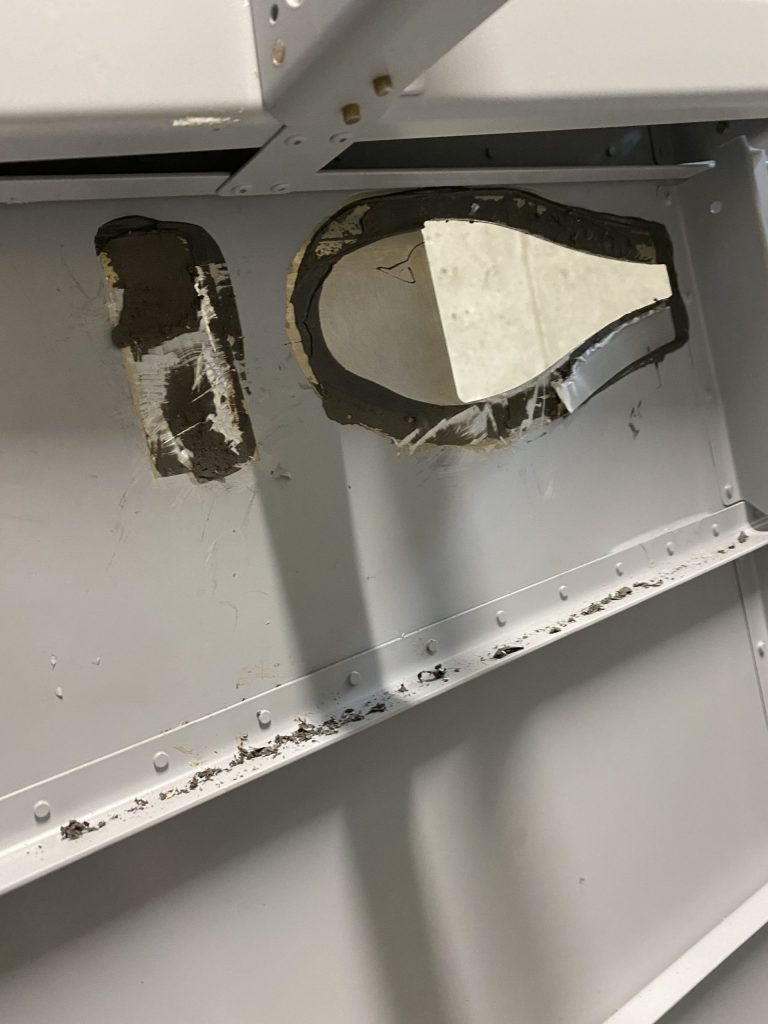
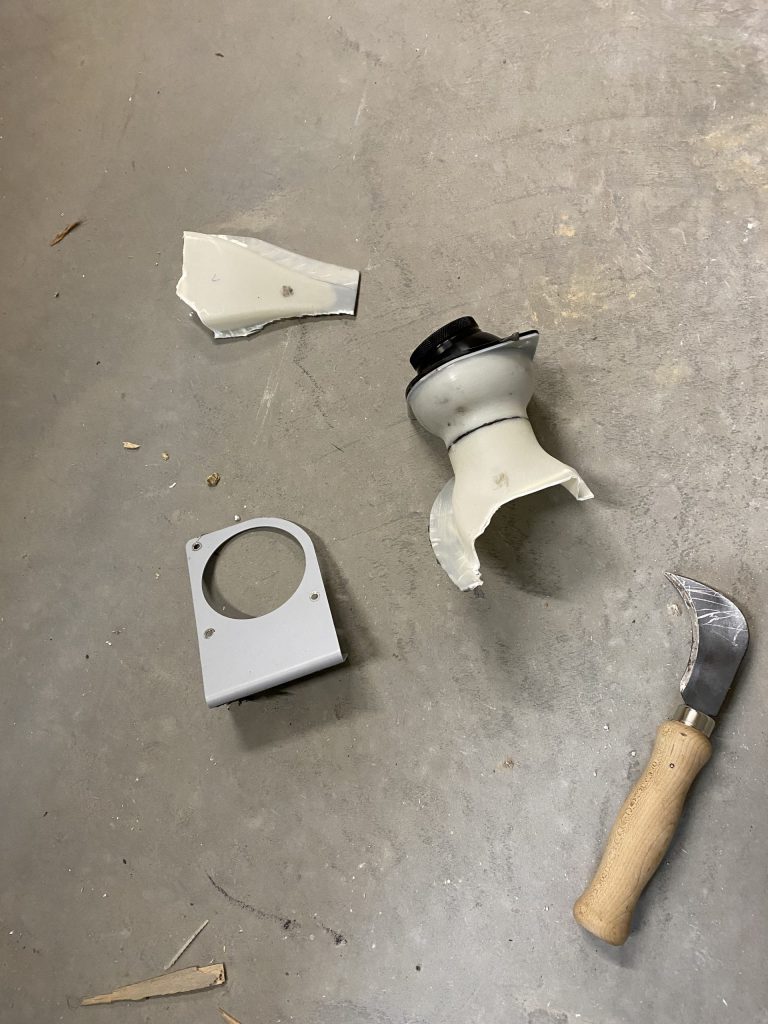
This was one of those rare days where things went smoothly with no mistakes, re-dos or other issues.
I got both sticks in. The cross connect is a bit challenging because there isn’t much room to work and there are washers and spacers that all have to be installed. I checked the alignment between the two sticks and the stick travel (fore and aft) and both were well within tolerance.
I then worked on the small Ray Allen sensor that is used to send the flap position to the EFISs and power controller. I was expecting this to be more difficult then it turned out to be. I had to remove part of the flap assembly that had been installed earlier so I could drill a hole in it but this was pretty straight forward. I still have to run the sensor’s wiring to the panel (when the panel arrives that is).
I got good news on the propeller and the interior. Both should ship in the next few days (a bit ahead of schedule). The finish kit should be in the crating process now so that should be coming in the next three weeks or so.
The instrument panel is being built at Steinair now (due in April-ish). The engine is likely to be mid May.
Jon and I have decided to remove the NACA vent that moved during install and redo it. Sucks, but in the end it will be better.
Hours: 2.5
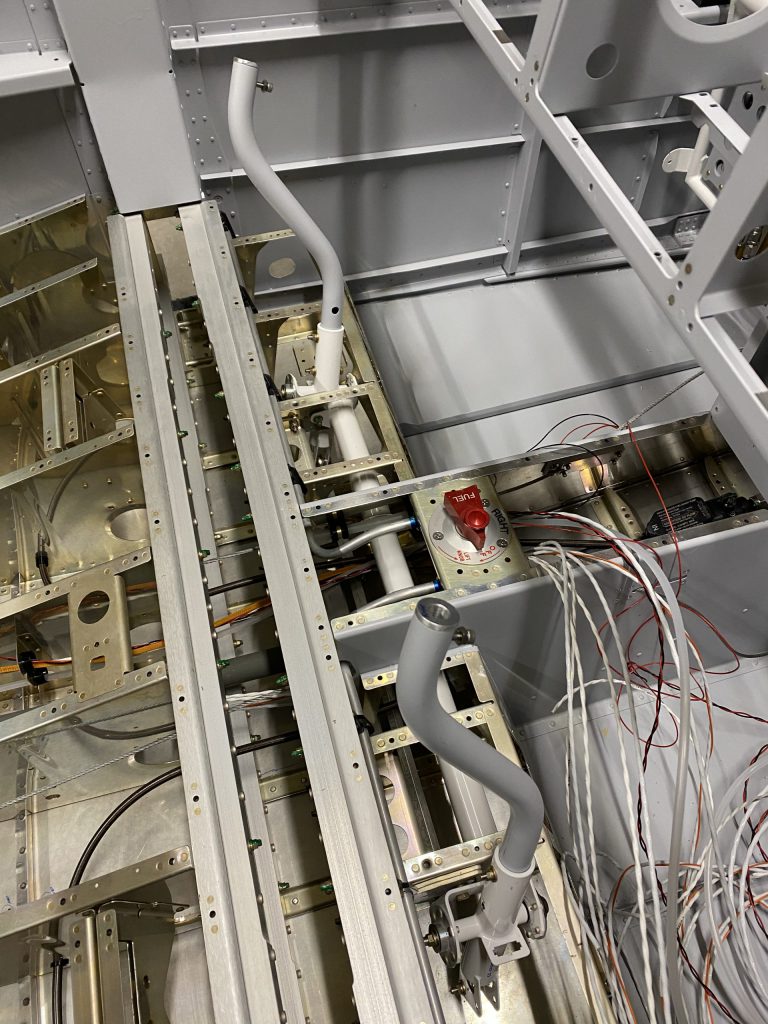
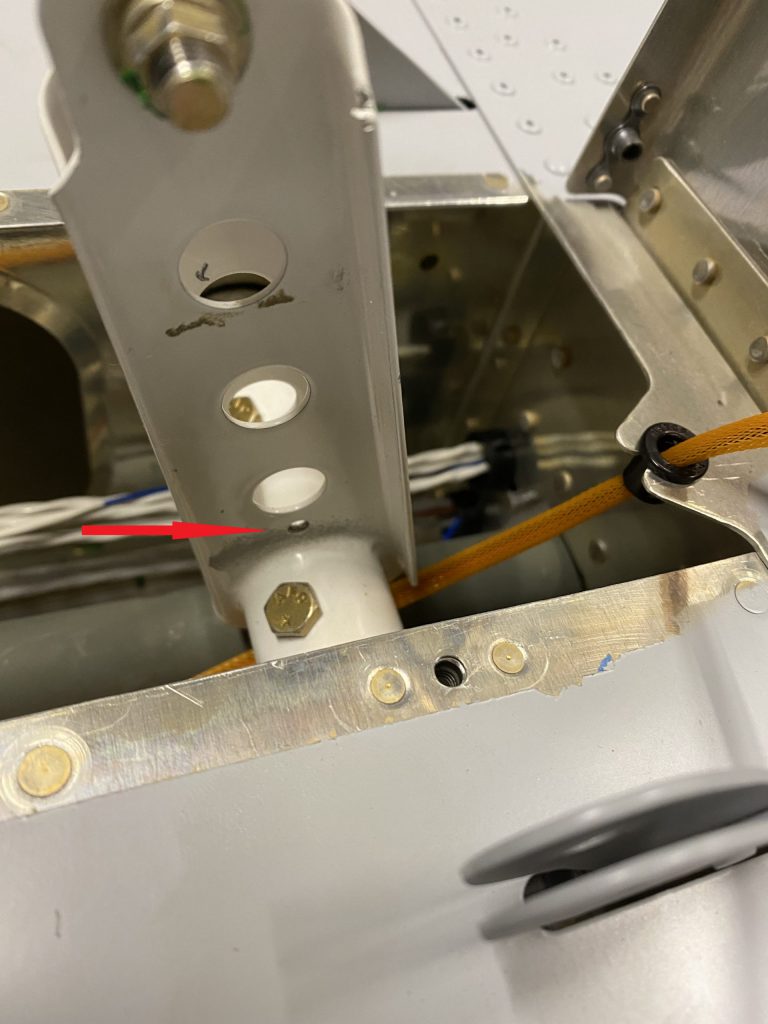
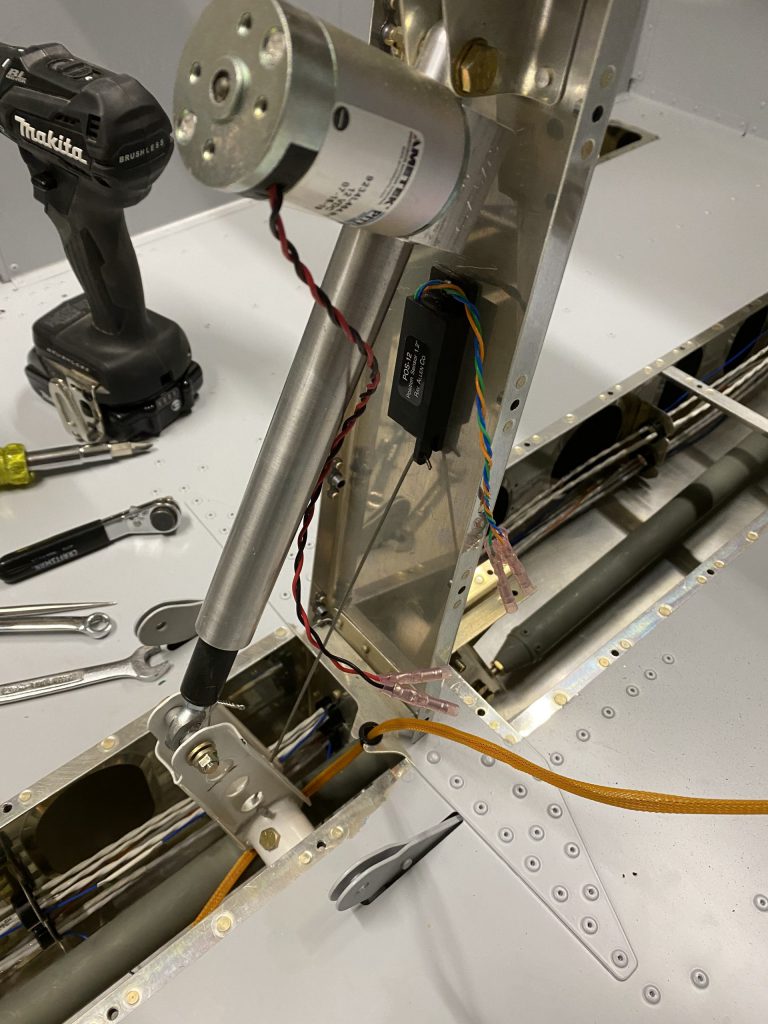
As usual a couple steps forward combined with a step or so backward.
We removed the airplane from the rotisserie (so we could access the firewall).
We worked on the stainless steel/fiberflax barrier for the firewall. This is designed to prevent a firewall forward fire from penetrating the cockpit. The challenge is that there are all kinds of penetrations that have to be cut out. Stuff like the master solenoid, the starter solenoid, the brake master cylinder, and various other components that are either mounted on the firewall or pass through the firewall.
There were also about 50 stainless steel rivets to install that hold the insulation “sandwich” to the aluminum firewall itself.
I installed the idler arms and linkages for the elevator control tubes. Not that difficult though I spent a fair amount of time getting washers and nuts all lined up in a fairly confined space.
I put the left stick together (twice since I initially had it backward) and installed it in the airplane. I will do the right stick next time I am in the workshop.
This is where I made my mistake that will require ordering more parts from Van’s. The top forward edge of the firewall has a piano hinge that is used to secure the back of the engine cowling. I carefully followed the directions but ended up with the holes too close to the edge of the hinge (I contend the plans have an error in them). The part is only $17 and I will add it to the finish kit which is being crated as we speak. Hopefully, I will have it in two weeks.
I also found an “oops” from a previous work session (NACA vent moved).
I got word that the Lycoming Thunderbolt engine that was originally supposed to arrive in March is now scheduled for May. Not too bad since I suspect I won’t be ready until late April anyway.
Propeller should be sooner. Also the interior (seats, stick boots, side panels etc.) should arrive from the manufacturer in Europe in about three weeks.
It is definitely starting to look like an airplane.
14 hours (2 people times 7 hours each)
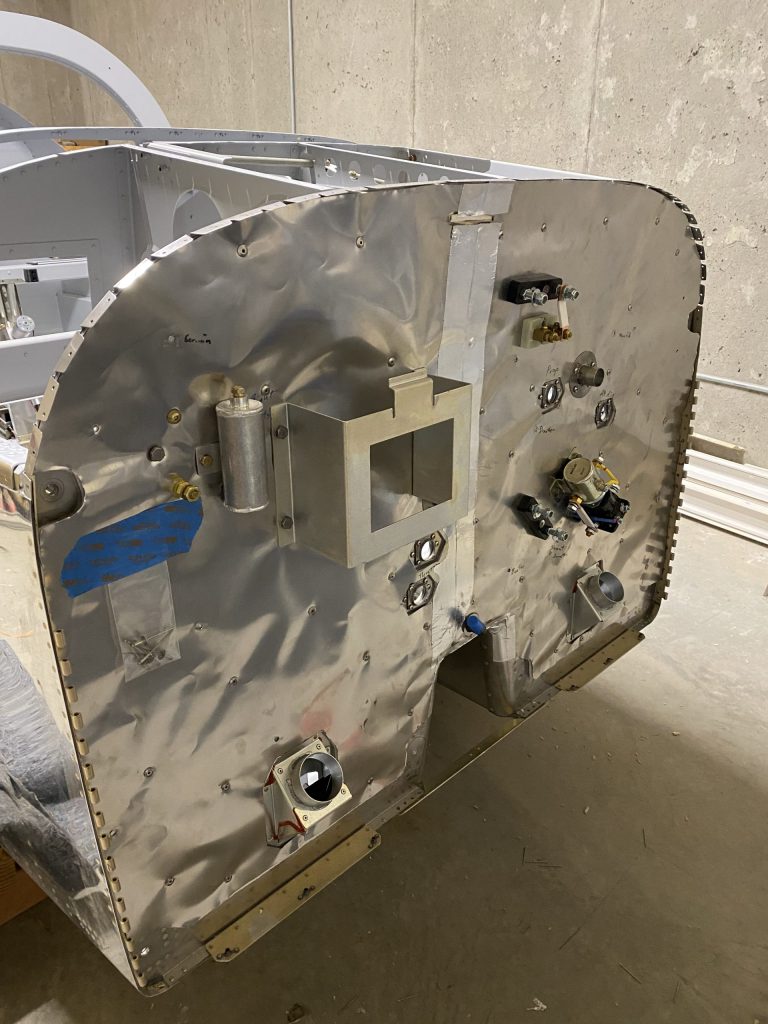
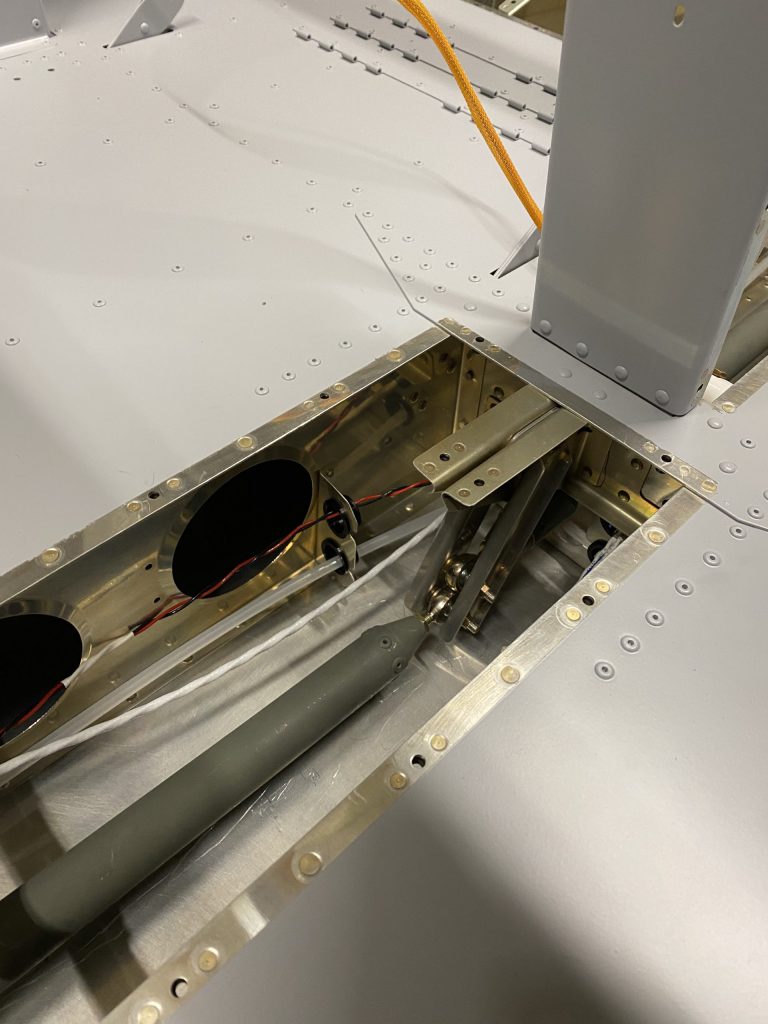
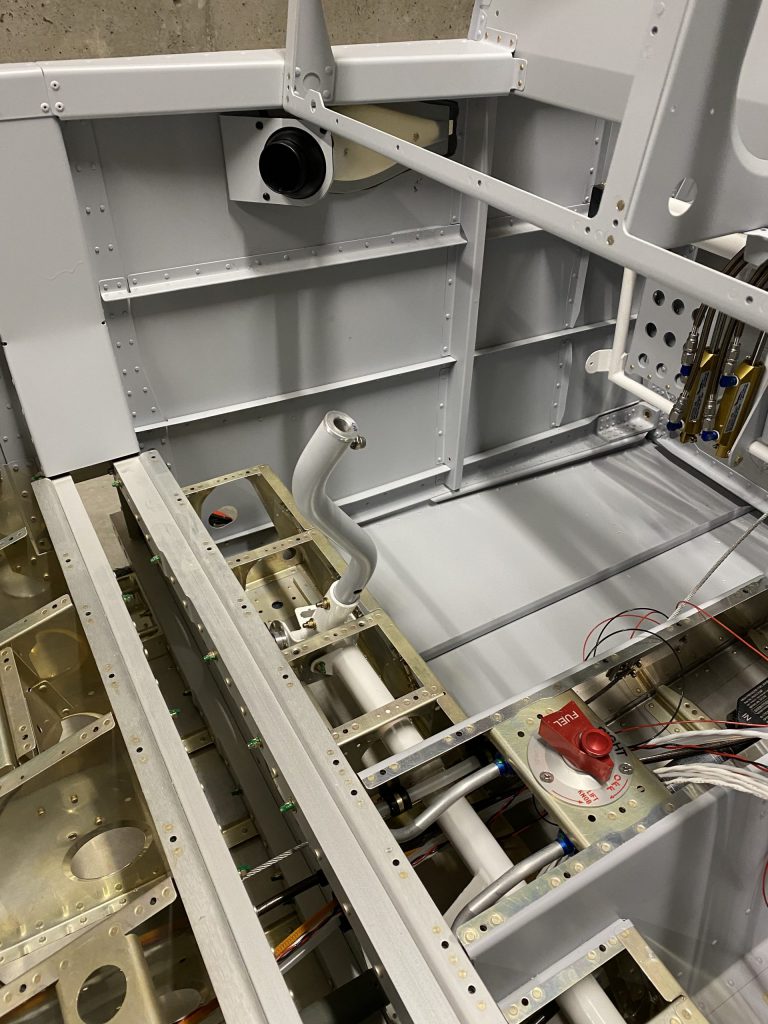
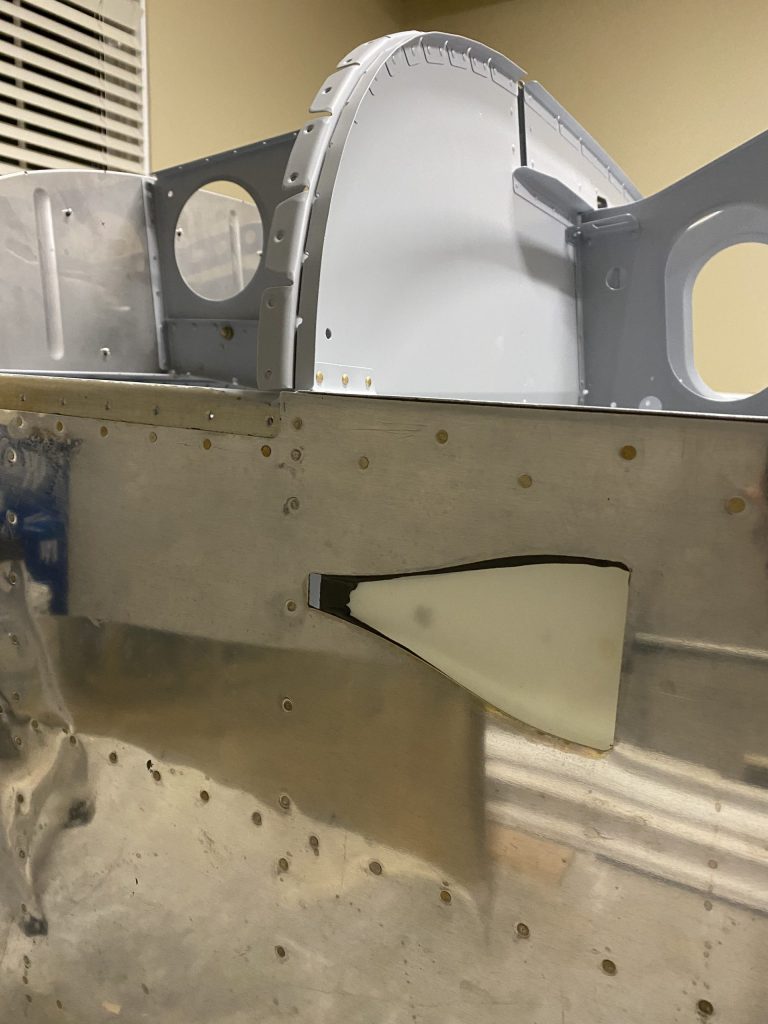
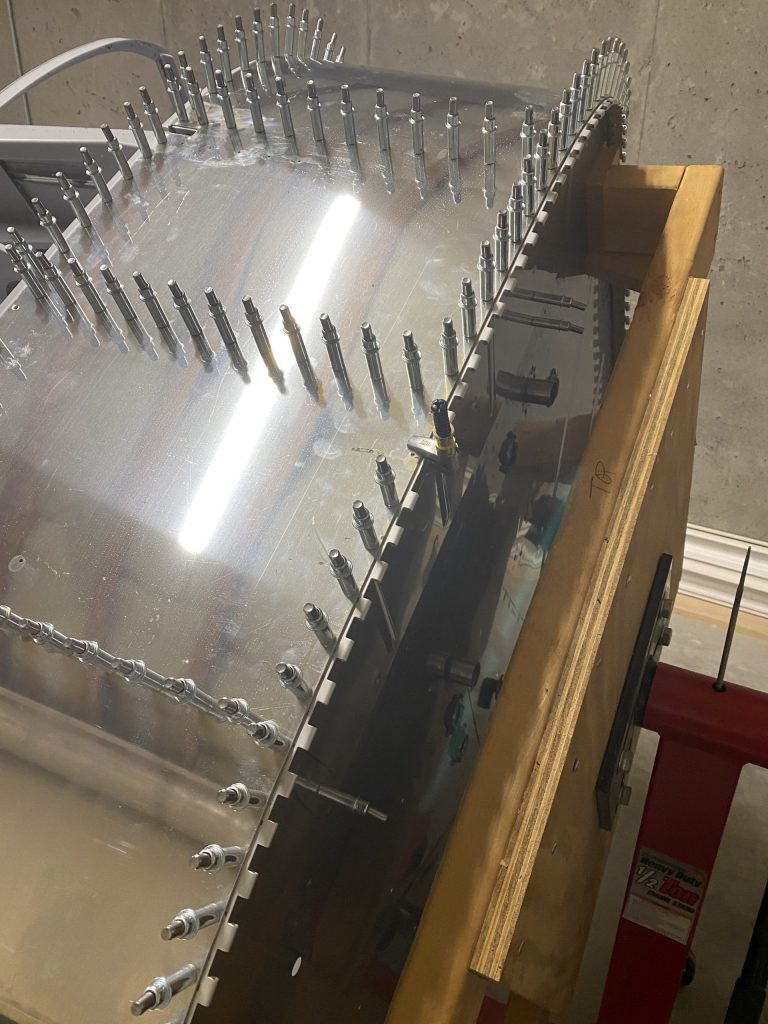
Jon stopped by to work on some more fuselage / tail interior items. We focused on completing the brake lines, installing the elevator control linkages and installing the pitch and yaw servos. We also ProSealed the NACA fresh air vent on the left side of the airplane. As usual we have another couple small items to order from Van’s Aircraft (total cost about $2 but shipping will be another $6).
Total time 7 hours (Jon 6, me 1)


I worked on the canopy hinges, gas struts and the canopy release mechanism. As usual, I put something together, tightened down bolts and then realized that I had missed a step and had to take it back apart. I have to wait for the paint to dry on one part of the canopy hinge mechanism so the total progress was miniscule.
I had planned to do some ProSeal work on the air vent today, but decided to put that off til tomorrow.
Total time: 2 hours

Jon and I got a lot done today. We finished up routing the brake lines. We fixed a couple pop rivets that I screwed up (last post). We installed the flap actuation system. We installed the Forward Upper Fuselage. We pulled several cables from the tail cone forward.
Soon it will be time to remove it from the rotisserie so we can start on some firewall things that are currently unreachable. The rotisserie makes working on the airplane so much easier.
Total time: 12 hours (Jon 7, Me 5).

